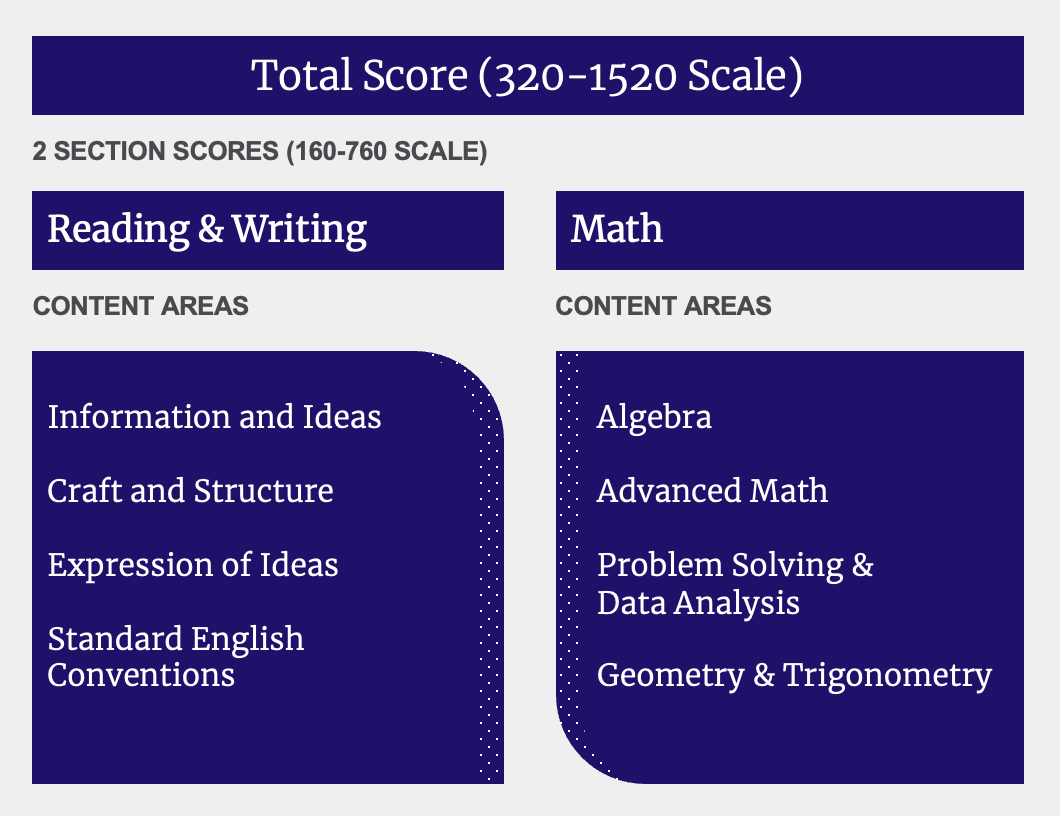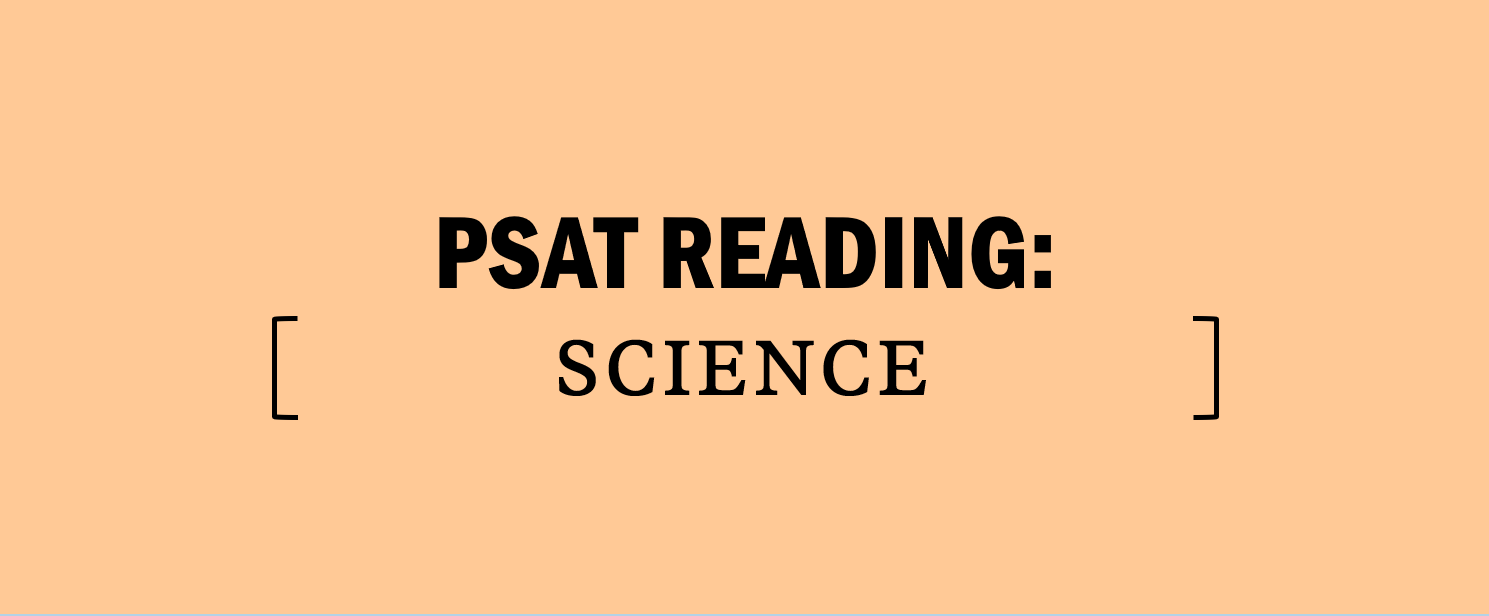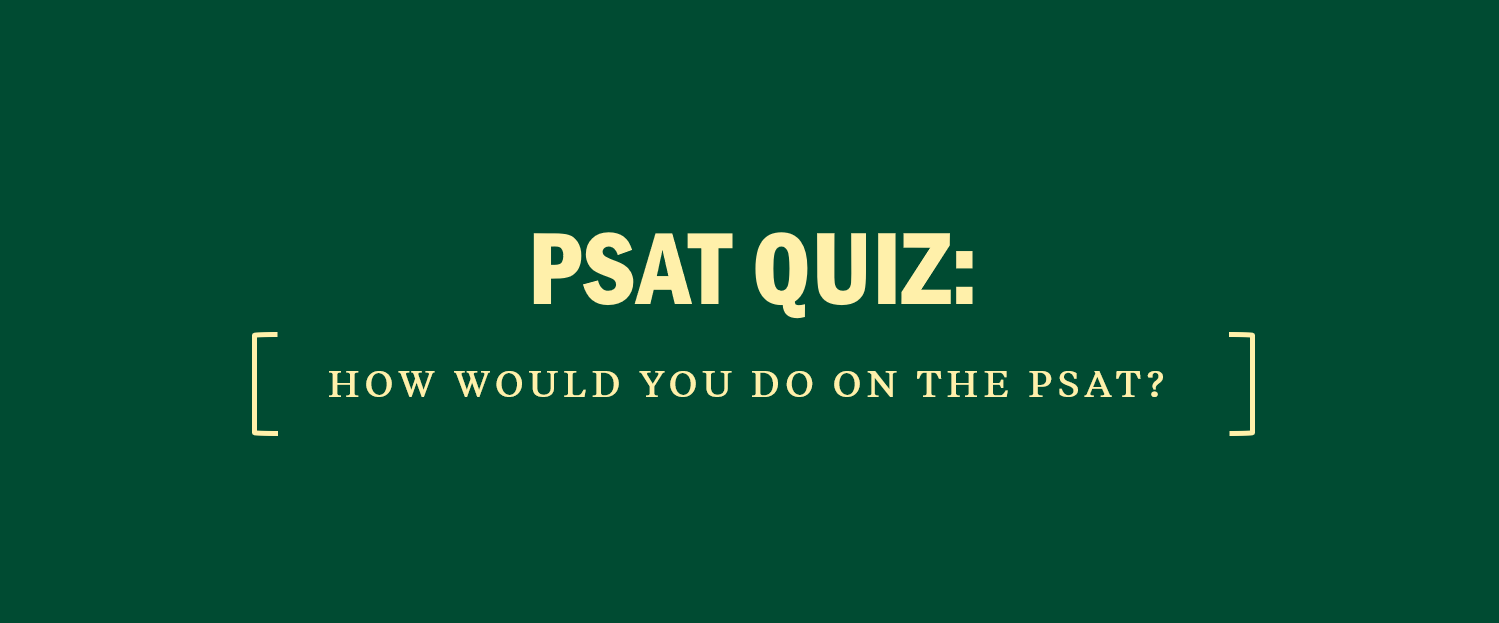What's Tested on the PSAT? (2025)
- The 2025 PSAT/NMSQT is a two-hour, 14-minute digital exam.
- The Math section is 70 minutes long and includes 44 questions. A built-in graphing calculator is available for the entire section.
- The Reading and Writing section is 64 minutes long and has 54 questions. The questions are based on short passages, each followed by a single question.
- Earning a high PSAT/NMSQT score can lead to a National Merit Scholarship.
The PSAT/NMSQT is a fully digital exam that tests your reading, writing, and math skills. It’s administered annually in October at your high school. “PSAT/NMSQT” stands for Preliminary SAT/National Merit Scholarship Qualifying Test. Your PSAT score will assess your college readiness as well as potentially qualify you for college scholarships. In this guide, we’ll review what you need to know about taking the PSAT so you feel confident on test day.
TABLE OF CONTENTS
- PSAT Test Structure
- The PSAT Math Test: What to Expect
- The PSAT Reading and Writing Test: What to Expect
- How is the PSAT scored?
- When and where do I take the PSAT?
- Should I study for the PSAT?
PSAT Test Structure
The PSAT is 2 hours and 14 minutes long and consists of two sections: (1) Reading and Writing and (2) Math. Each section is divided into two modules. This two-module format divides each section into two parts, each timed separately.
Here’s how the PSAT is structured:
| SECTION | MODULE | ALLOTED TIME | QUESTION COUNT |
| Reading & Writing | Module 1 | 32 minutes | 27 |
| Reading & Writing | Module 2 | 32 minutes | 27 |
| Math | Module 1 | 35 minutes | 22 |
| Math | Module 2 | 35 minutes | 22 |
| Total: | 4 modules | 134 minutes | 98 questions |
Once you submit your answers for the first module of either the Reading and Writing or the Math section, you won’t be able to return to that module. This is because the PSAT is an adaptive test, meaning your performance on the first module of each section will determine the difficulty level of the second module you’ll take.
[ READ NEXT: What’s a Good PSAT Score? ]
The PSAT Math Test: What to Expect
The PSAT Math section includes 44 questions divided between two modules. You have 35 minutes to answer the 22 questions in each module. The PSAT math section tests your ability in four content areas: Algebra, Advanced Math, Problem-Solving and Data Analysis, and Geometry and Trigonometry.
What’s covered on the PSAT Math test?
In the chart below, we break down what’s tested on the PSAT Math test:
| Algebra (13-15 questions) | Solving, creating, and using: – Linear equations – Linear functions – Linear inequalities – Systems of linear equations Making connections between different representations of linear relationships |
| Advanced Math (12-14 questions) | Interpreting, solving, creating, and using: – Equations with absolute value – Equations with radicals – Quadratic equations – Exponential equations – Polynomial equations – Rational equations – Other nonlinear equations Making connections between different representations of nonlinear relationships between two variables. |
| Problem Solving and Data Analysis (7-9 questions) | Solving questions using: – Ratios – Rates – Proportions – Units – Percentages Analyzing and interpreting data, including distributions and scatterplots Calculating and interpreting: – Probability and conditional probability – Mean, median, and range Comparing distributions’ standard deviations |
| Geometry and Trigonometry (4-6 questions) | Solving questions involving: – Area and volume – Lines, angles, and triangles – Right angles and trigonometry |
PSAT Math Question Types
Questions across the PSAT Math section consist of both multiple-choice and some student-produced responses, on which you will type in your answer. About 25%, or 11, of the questions will be student-produced responses, and the rest will be 4-option multiple-choice questions. With 44 questions to answer in 70 minutes, this gives you about a minute and a half per question.
Here’s how the 44 PSAT Math questions break down:
| QUESTION TYPE | QUESTION COUNT |
| Multiple-Choice Questions | ~33 |
| Student-Produced Responses | ~11 |
| Total: | 44 |
Calculator Use on the PSAT Math Section
You are allowed to use a calculator on all questions in the PSAT Math section. The PSAT digital test platform has a built-in graphing calculator that you can use, or you can bring your own approved calculator. Check College Board’s website for the most up-to-date list of approved calculators you can bring to the PSAT.
The PSAT Reading and Writing Test: What to Expect
The PSAT Reading and Writing section includes 54 questions divided between two modules. You will have 32 minutes to answer the 27 questions in each module. The PSAT Reading and Writing section includes questions in four major content areas: Information and Ideas, Craft and Structure, Expression of Ideas, and Standard English Conventions.
What’s covered on the PSAT Reading and Writing test?
In the chart below, we break down what’s tested on the PSAT Reading and Writing test.
| Information and Ideas (12-14 questions) | Using reading comprehension, analysis, and reasoning skills to answer questions about: – Main ideas – Details – Command of Evidence (text and graphs/tables) – Inferences Interpreting, evaluating, and, integrating ideas |
| Craft and Structure (13-15 questions) | Using reading comprehension, analysis, and reading skills to answer questions about: – The meaning of words in context – The purpose of texts – Connections between related texts |
| Expression of Ideas (8-12 questions) | Using revision skills to answer questions about: – Synthesizing ideas to achieve rhetorical goals – Making effective transitions |
| Standard English Conventions (11-15 questions) | Using editing skills to follow Standard English conventions, including: – Sentence structure – Punctuation – Verb agreement – Pronoun agreement – Modifier agreement |
PSAT Reading and Writing Question Types
Each question on the PSAT Reading and Writing section is accompanied by a short passage, usually a paragraph in length. Some questions may have two short passages about the same topic, and a few questions will have a bullet point list of notes about a topic. Passages will draw from literature, history/social studies, the humanities (topics such as the arts), and science. Some questions will also be accompanied by a graphical representation of data, such as a graph or table.
Here’s how the 54 PSAT Reading and Writing questions break down:
| ALLOTTED TIME | QUESTION COUNT | |
| Module 1 | 32 | 27 |
| Module 2 | 32 | 27 |
| Total: | 64 | 54 |
How is the PSAT scored?
Your total PSAT score will range from 320 to 1520 and is calculated by adding your section score for Reading and Writing to your section score for Math. The PSAT is adaptive—how well you do on the first module of the Reading and Writing section or the Math section determines the questions you see in the section’s second module.
Doing well on the first module, also known as the routing module, will send you to a higher difficulty second module. This will give you a chance to earn the very top scores for a section (either Reading and Writing or Math). Keep in mind that even if you are routed to an easier second module, you can still earn a competitive score on the PSAT. Don’t spend time trying to figure out which difficulty level you were routed to; this will only waste your brainpower and time. Your focus should be to do your best on every question, regardless of which module it is in.

When and where do I take the PSAT?
The PSAT/NMSQT is offered every October. This year, the testing window is October 1–October 31, 2025. Schools will administer the exam on a school day within this window. There are Saturday testing options on October 11 and October 18, 2025 that some schools may choose.
The PSAT is administered at your high school, not at a testing center. Homeschooled students can sign up at a participating local high school. Some high schools recommend that their sophomores take the test for additional practice, but sophomores who take the PSAT are not eligible to qualify for the National Merit Scholarship unless they are in an accelerated program and are preparing to graduate the following year. However, some schools will administer the test to their students only once (at the beginning of junior year). If this is the case, sophomores wanting to take the PSAT need to get permission from their guidance counselors.
Should I study for the PSAT?
Yes, you should study for the PSAT so you can earn a good score! You can use your exam results to predict your score on the SAT or the ACT. Your performance on the PSAT can also give you insight on how to structure your SAT prep or ACT prep and help you pinpoint your strengths and weaknesses. Additionally, taking the PSAT can lead to more money for college through the National Merit Scholarship Program. Your PSAT scores are automatically submitted for consideration, and you may be selected as a National Merit Scholarship Finalist and ultimately receive an award.
Jumpstart your PSAT prep with help from Kaplan. Learn about our free PSAT On Demand course and more!
Written by Kaplan experts, reviewed by Melissa McLaughlin, Pre-College Content Developer and Heather Waite, Director of Content and Curriculum, Pre-College.






